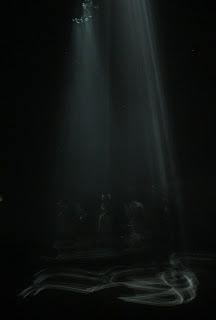The book I have been reading recently, House of Leaves, shows a different concept of space changing in response to what a character is seeing/expecting. It refers to dark corridors and staircases that expand and contract in response to characters' fears and anxieties about it.
Some critics believe the house's mutations reflect the psychology of anyone who enters it. Dr Haugeland asserts that extraordinary absence of sensory information forces the individual to manufacture his or her own data.(...) the house, the halls, and the rooms all become the self - collapsing, expanding, tilting, closing, but always in perfect relation to the mental state of the individual.
Experienced or concrete space: It has a center which is perceiving man, and it therefore has an excellent system of directions which changes with the movement of the human body.; it is limited and in no sense neutral, in other words it is finite, heterogeneous, subjectively defined and perceived; distances and directions are fixed relative to man...
Both here and in Repulsion we deal with space that changes when seen by different people, or even the same people in a different state of mind. There is a few differences such as the scale of changes to spaces and whether it is space that is haunted or a person, but at certain level both come down to how the space is perceived.














